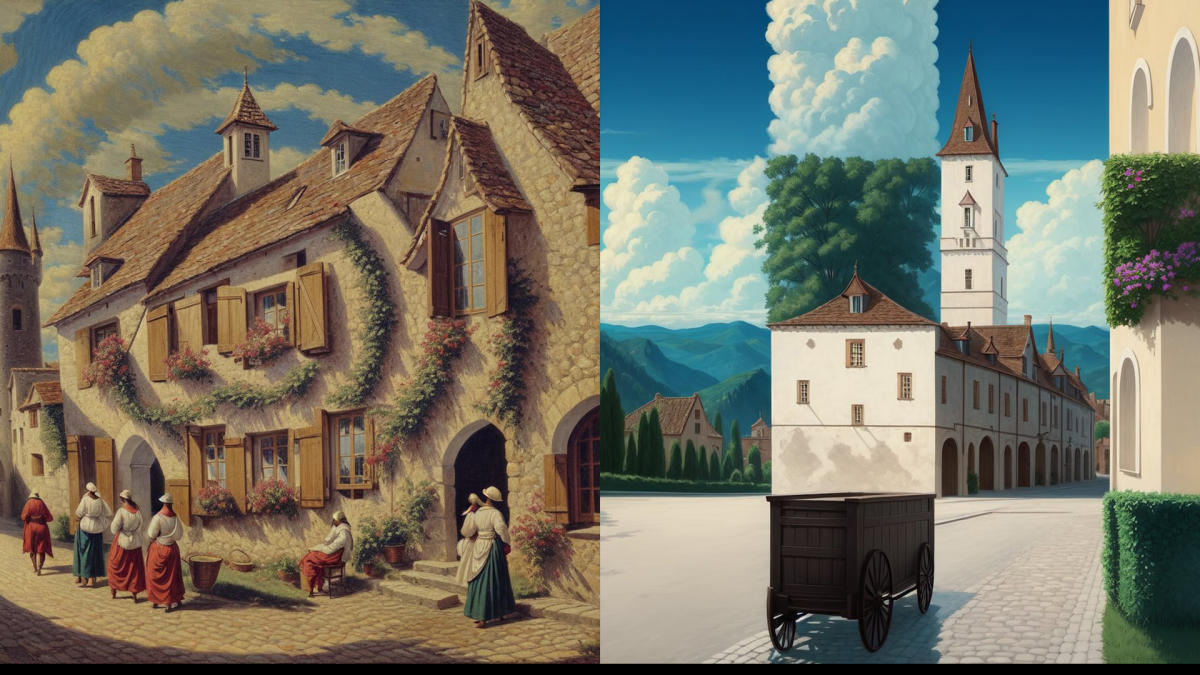Are you fascinated by images that trick your eye, making you look twice? Optical illusions have a unique way of catching our attention. They blend art and science, creating pictures that seem to shift before our eyes.
Now, imagine combining this mystery with AI technology. This new wave has turned the simple act of viewing art into an interactive experience.
Optical illusion AI photos have become wildly popular on social media platforms. Why? Because they offer a fresh twist on visual perception, inviting everyone to see beyond the obvious.
Our article will guide you through how AI can create these captivating optical illusion images. From choosing the right app to exploring endless artistic possibilities, we’ve got you covered. Get ready for some eye-opening fun!
How AI Can Create Optical Illusion Images
AI can make amazing optical illusion images in easy steps. It uses smart tricks to mix up pictures, making you see things that may surprise you.
Creating optical illusions with AI is easy and fun. The Illusion Diffusion AI image generator lets users make their own magic. You just need an image mask/illusion and a prompt. After that, hit “Run.” These illusions can show medieval landscapes and village scenes.
People love sharing the illusions they make. The images can look like different things based on how you see them. Some even change into three different pictures when you rotate them.
This shows how creative and exciting making illusion artwork with AI can be.
The Process of Generating Optical Illusion Images with AI
Crafting optical illusion images with AI is a journey of mixing art and technology to trick our eyes, inviting everyone to explore more.
Placing hidden images
Placing hidden images inside optical illusions is a creative process. Illusion Diffusion and Pincel AI image generators help do this smoothly. You can put secret pictures into your illusions with custom prompts and templates they offer.
This means making an illusion that shows different objects or scenes depending on how you look at it.
The key to success lies in using these tools correctly. With Illusion Diffusion, for example, you can make complex illusions that trick the eye. By adjusting settings and choosing the right template, your hidden images blend into the main picture seamlessly.
Using AI image generators
After setting up hidden images, the next step is using an ideal AI image generator. These generators use artificial intelligence to make optical illusion images that can trick your eyes and mind.
Tools like PopAi or other popular ones are great for this job. They use something called neural networks to create illusions that look real but aren’t.

You don’t need to be a tech expert either. With a few clicks, you can switch between different effects and add your own style to the illusions. Some tools even let you test which illusions work best, by comparing them in ways similar to scientific tests on vision models.
Switching up the effect
To switch up the effect, researchers play with how an image changes based on where you stand. They used a tweaked AI tool to make cool hybrid pictures. This means some images can look different if you move closer or farther away, or change your angle.
The team worked with something called factorized diffusion. It breaks a picture into parts and uses AI to mix them in new ways. This trick makes one picture show various things depending on how you look at it.
This method led to pictures that shift in color, size, and even seem to move when they’re actually still. You can find these images and the code behind them online, showing off what AI can do with visuals.
Next Steps for Using AI to Create Optical Illusion Images
So, you’ve got the basics down for creating optical illusion images with AI. Now, it’s time to push further into this exciting journey.
Explore other AI tools
Exploring other AI tools opens up new possibilities for creating optical illusion images. For instance, Pincel has launched three unique apps: Spiral AI Art Maker, QR Code Art Maker, and Logo AI Art Alias Maker.
Each app serves a different purpose but all are focused on crafting stunning optical illusion photos with ease. The beauty of these tools lies in their ability to transform simple visuals into complex illusions that captivate the viewer.
Illusion Diffusion, offered through the Hugging Face community, presents another fascinating way to generate optical illusions without much hassle. Its customization options allow users to tweak various settings and design illusions in numerous styles, making it incredibly versatile.
Furthermore, generative AI models have shown great potential in converting text into elaborate visual tricks. These advances suggest a growing field of innovation where your imagination is the only limit – pushing boundaries and exploring new artistic frontiers with AI-generated images and illusion art maker capabilities.
Consider other uses for AI-generated images
AI-generated images probe our brains, showing us how we see the world. This magic starts by using AI to examine visual illusions—the tricks that make us see things differently than they are.
Scientists use these illusions to study our brain and consciousness. They train a computer with pictures from the real world. Then, this smart computer can guess what’s going on in our heads when we’re fooled by an illusion.
These fascinating studies help link what we think and feel inside with what happens outside. We’re not just making neat pictures; we’re exploring how we think and experience everything around us.
It’s like having a map of how our mind turns things into pictures. And it’s about understanding ourselves better and pushing science to new places, one illusion at a time.
Conclusion
Creating optical illusion images with AI is thrilling and easy. You’ve learned about different tools and how they let you make cool art. With AI, placing hidden pictures or changing effects is simple. Making these images shows the power of combining art with technology. Let this inspire you to try making your own optical illusions with AI today!






